
Capital City Origins ~ South America
First published: Saturday December 18th, 2021
Report this blog
Introduction.
Here we are in the penultimate continent. South America. Although there is a theory that the continent is just America, including the north, due to there being a narrow strip of land connecting the North and South. I'm talking about the Darien Gap between Panama and Colombia. Whilst it does indeed join the two land masses, it is an inaccessible area ruled by drug lords and people smugglers, as well as being a mountainous rain forest in parts and swampland in others. But that's a story for another blog. Suffice to say there is a definite line that can be drawn between the two continents.
We start our imaginary South American journey in Patagonia, although none of the cities that interest us are in this region. Both Santiago and Buenos Aires lie to the north. The whole of South America has only twelve countries (not counting French Guiana, that is a department of France. Something else for another blog) but thirteen capitals. Bolivia joining the exclusive club of countries with multiple capital cities.
This continent with the longest mountain range in the world, one of the largest rivers, and one of the most expansive rain forests is a land of environmental diversity. It is the land of the Incas, and of many indigenous tribes, some of whom it is rumoured to still be undiscovered.
So anyway, let's get going and move on to our first city.......
Santiago. Chile.
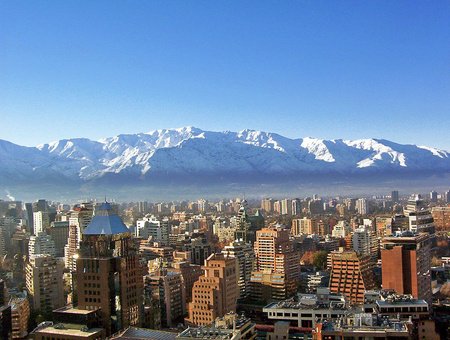
Santiago, or as it's also known Santiago de Chile, was founded in 1541 and became the capital in 1810 when the country gained it's independence.
It was named Santiago by it's founder, Pedro de Valdivia, after the patron saint of Spain, James the Great. The name of James is rendered in several different ways in Spanish. It can be Diego, Jaime, Jacobo or Santiago. Santiago is derived from the Latin Sanctu Iacobu.
SANTIAGO = SAINT JAMES
Buenos Aires. Argentina.
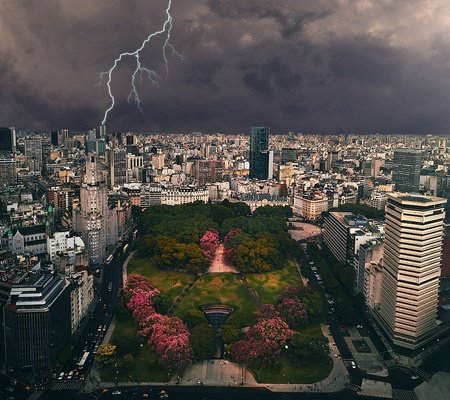
Baires, as the locals call it, was first founded by visiting Spanish sailors in the 16th century. They called it Ciudad de la Santísima Trinidad y Puerto de Santa María del Buen Aire, which translates as "City of the Most Holy Trinity and Port of Saint Mary of the Fair Winds". The seafarers were refering to a saint that was said to have resided in Sardinia and that helped to calm the Mediterranean Sea from storms.
Over the years the name of the city has been shortened and slightly altered to now become Buenos Aires. Or if you want it to be even shorter, Baires or even BA. Nothing to do with Mr.T though.
BUENOS AIRES = FAIR WINDS
Montevideo. Uruguay.
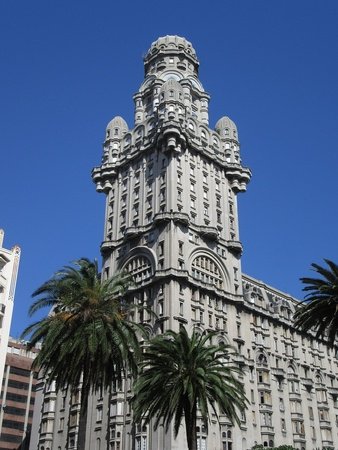
Established in 1724 by Bruno de Zabala, a Spanish soldier, as a strategic move during the Spanish - Portugese dispute over the region, Montevideo is nowadays compared to Brussels in Europe due to being the centre of South America's financial business. Many continent wide companies have their headquarters in the city.
There are several theories for the etymology of Montevideo. All agree that the Monte part of the name refers to a nearby hill across the bay.
The most popular belief is that it comes from monte vide eu meaning "I saw a mount", although most experts discount this theory.(What do they know ?). Other theories are that it means "mount like a hat", or even "Mount of Saint Ovidio". I like the first one.
MONTEVIDEO = I SAW A MOUNT
Asuncion. Paraguay.
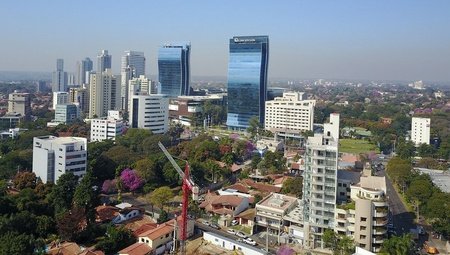
Asuncion is one of the oldest cities in South America. For this reason it is known as the "Mother of Cities". The city was founded by a Spanish conquistador whilst on a mission to find a compatriot. He found the natives friendly so decided to build a fort in the area that he called Nuestra Señora Santa María de la Asunción meaning "Our Lady Saint Mary of the Assumption". Assumption is a Catholic dogma whereby someone has left their earthly life and been "assumed" into the kingdom of Heaven. (I think that's right, I'm not a religious person, correct me if I have got that wrong. If I have I apologise)
Over the years the name has been reduced to Asuncion.
ASUNCION = ASSUMPTION
Brasilia. Brazil.

Note to self.....Get this right or MG17 will be on my back. Brasilia is a planned city first concieved by an advisor to Pedro I in 1827, however the design was not implemented until 1956, with the capital moving from Rio de Janiero in 1960. Incidently Rio de Janiero (January River) was the second capital after Salvador (Saviour). It's streets, Brasilia, not Rio or Salvador, are planned around two axes (thats 2 different axises, not the tools you chop wood with) that create the shape of a cross.
The capital was moved from Rio to be in a more central position in the country. In 2017, Brasilia was named "City of Design" by UNESCO and has been part of their Creative Cities Network since then.
The etymology of the city is fairly obvious in that it is named after the country it serves. However the word Brazil, Brasil in Portugese derives from the brasilwood plant.
BRASILIA = FROM BRAZIL
Sucre. Bolivia.
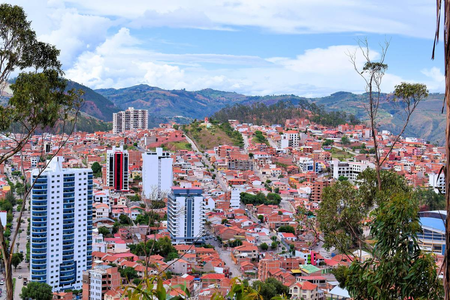
Along with La Paz, Sucre is one of two Bolivian capitals. Sucre contains some of the best preserved Hispanic buildings in the world and as such was designated a World Heritage Site in 1991. Also known as the "City of Four Names" Sucre was called Charcas, La Plata and Chuquisaca prior to being renamed in honour of the revolutionary leader Antonio Jose de Sucre.
SUCRE = Named after Antonio Jose de Sucre
La Paz. Bolivia.
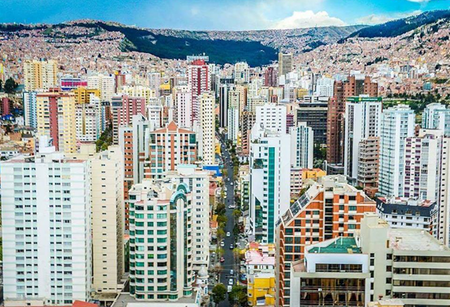
Our second Bolivian capital is La Paz. It was founded in 1548 by conquistador Alonso de Mendoza, on the site of an Inca settlement that was on the trade routes from other parts of Bolivia to Lima. It is well known for it's many markets especially the "Witches Market" run by local Witch Doctors and selling potions and ingredients for spells.
The city's original full name was Nuestra Senora de la Paz meaning "Our Lady of Peace". The name was changed to reflect the republican victory in the Spanish American wars to La Paz de Ayacucho (The peace of Ayacucho).
LA PAZ = PEACE
Lima. Peru.
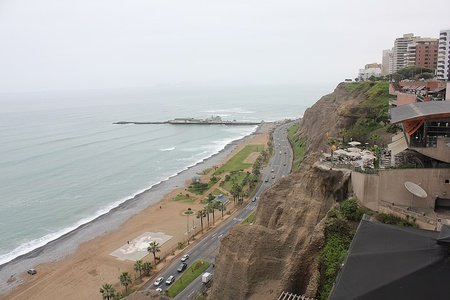
Lima has risen from destruction several times, mainly due to earthquakes but also from Inca invasions after the Spanish took over in the 16th century. The Spanish originally called the city Cuidad de los Reyes (City of Kings) however the name never really stuck, most locals preferring to still use the name Lima.
The name Lima comes from the Quechua language, Limaq meaning "Talker" or "Speaker". Its origin derives from the Spanish translation of Limaq.
LIMA = SPEAKER
Quito. Ecuador.
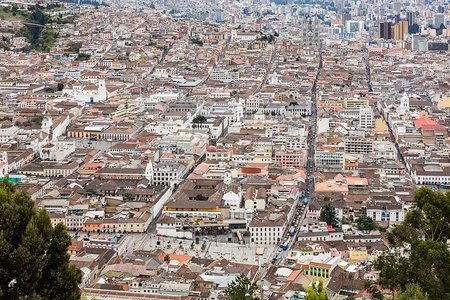
Quito is one of the best preserved cities in the Americas, in fact in 1978 it was one of the first cities, along with Krakow in Poland, to be declared a World Cultural Heritage Site by UNESCO. The area around the city has been inhabited since at least 8000BC, and evidence of many ancient dwellings have been found nearby.
The name is derived from the people that once lived there, the Quitu tribes. Their name derives from two Tsafiki words, quitso meaning "centre" and to meaning "the world", roughly translating as "centre of the world". Given the proximity to the Equator this makes sense. Although, how the ancient tribes could perceive an imaginary line from the future is another story.
QUITO = CENTRE OF THE WORLD
Bogota. Colombia.
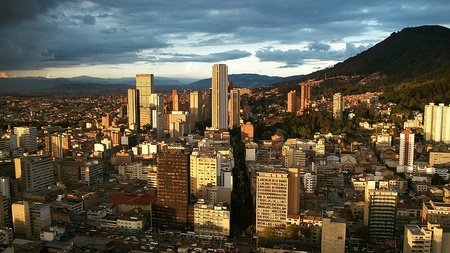
Bogota has been the capital of Colombia since before it was Colombia, I mean the capital of former nations that occupied the same lands, well, I know what I mean anyway. It was the capital of the New Kingdom of Granada from 1538, then after 1717 the capital of the Viceroyalty of New Granada. It then became the capital city of the independant nation of Gran Colombia and eventually the Colombia we know today.
It's name comes from the Spanish pronunciation of the Chibcha word, Bacata. The meaning of this can be derived as "Walling of the farmland".
BOGOTA = WALLING OF THE FARMLAND or FARM WALL if you like.
Caracas. Venezuela.

Located entirely within the valley it takes it's name from, Caracas was originally built as Santiago de Leon de Caracas, which is still the official name for the city. Also often abbreviated to CCS, Caracas currently has one of the highest murder rates in the world.
The name of the city, and of course the valley too, derives from the Caracas tribe that lived in the area now occupied by the nations capital. The official name also shows homage to St. James of Spain and of Leon, the governor of the time.
CARACAS = named after the CARACAS PEOPLE
Georgetown. Guyana.

And so to the penultimate capital city in South America, at least on our journey. Georgetown. Nicknamed the "Garden City of the Caribbean" this city has been in the hands of many nations. Originally settled by the Dutch, it was captured by the British in 1781, then colonised and made the capital by the French in 1782 who called it Longchamps. It reverted to Dutch ownership in 1784 and renamed Stabroek (after the president of the Dutch West India Company).
In 1812, once again a British colony it was renamed Georgetown in honour of King George III.
GEORGETOWN = named after KING GEORGE III
Paramaribo. Suriname.
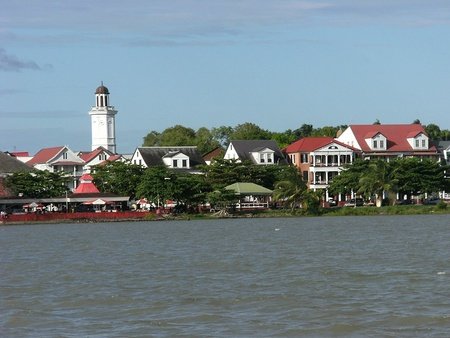
Paramaribo, or Parbo for short, was the site of the first Dutch settlement in Suriname. Even today almost half of the nations population lives in the city. The colonial buildings that abound here prompted UNESCO to declare the inner city a World Heritage Site in 2002.
The city's name comes from the village that was inhabited by natives in the same area, the village was the name of the tribe, the Paramaribo. The derivation of this name comes from the Tupi-Guarani language, para meaning "large river" and maribo meaning "inhabitants".
PARAMARIBO = LARGE RIVER INHABITANTS
Summary.
So that's South America, only it isn't really complete. There is another capital, Cayenne, but that is in the French department of French Guiana. Technically this country is part of France, it is part of the European Union and uses the Euro as it's currency. So it's in Europe, right?. Oh no, I can see another "Cyprus issue" on the horizon. Let's leave that one for another day shall we?
Anyway, South America done, and our journey heads northwards. North America, and I include Central America in this section, consists of two distinct groups of nations. The islands in and around the Caribbean Sea, and the mainland based nations. I shall be splitting the North America section into two. One with all the island nations, and the other mainland nations.
The name of South America is obviously a geographical one depicting the southern half of the Americas land mass. The Americas comes from Americus, being the Latin version of Amerigo Vespucci's first name. He was an Italian explorer, merchant and navigator from Florence born in 1451 that made several voyages of discovery around the globe.
AMERICAS = named after AMERIGO VESPUCCI.
See, I can remember to put things into the text sometimes. So anyway it's now a short boat ride across the Columbus Channel or the Bocas del Dragon from Venezuela to Trinidad and Tobago and our first foray into North America. see you soon on our Caribbean adventure.
Now where did I put my Jack Sparrow costume......AVAST YE LANDLUBBERS !!!!

I can already here MG typing his paragraphs in the comments
or BGG can say everything, isn’t he that know 70% of Portuguese? He’s even online!lol. Because of the division in squares, some people even say Brasília doesn’t have corners. There is also Paranoá Lake, and artificial like that dam the waters of the homonym river. There, you can see the JK Bridge. The Federal District is also divided in Administrative Regions (not municipalities). I can quote Ceilândia, Taguatinga, Sobradinho, Planaltina, Gama, Formosa, among others. And Brasília NP :)Now let’s talk about the blog itself! As always, amazing. I would suggest an image of Santiago with the Gran Torre Santiago and the Andes, but I couldn’t find on Commons. And also, where is Buenos Aires Obelisk!? Lol. Although you get beautiful images
Suggestion: search “brasilia wikimedia commons”. You can find lots of good images :) (although I couldn’t find none with the Mané Garrincha National Stadium lol)
There is many places in the cities I could have written about, this is the same for each and every capital. And there are many pictures I could have used (except for Palikir) in any of the entries. I chose the most flattering available, there are some that would not do the city justice or were unsuitable for younger readers. I left these out, one could always seek out the Wikipedia pages for each city after all.
I also decided to just write a very brief description so space is also at apremium. If I wrote a lot about one, I'd have to do it for all of them.
Anyway, thanks again for the comments MG, always appreciated when someone takes the time to read and comment on my blogs.
I think “cross” is kinda confusing to the Brasília Plano Piloto, (✈️ ✝️ ), but I understand.
And yeah, I was writing the part of the history, but then I got A FEW excited lol.
It’s always appreciated to have bloggers like you! :)
MG already typed his paragraphs, but I can still hear him 😉
However, for example, the British Antarctic Territory is classed as an overseas territory and as such has a "local" capital in the same way that each US state has a capital. Rothera Research Station is the capital of B.A.T.
I've decided that overseas territories is going to be my next blog series...I think.
Anyhow, again, great blog! Looking forward to North America!
I'm so curious as to what/whom Washington DC was named after...:)